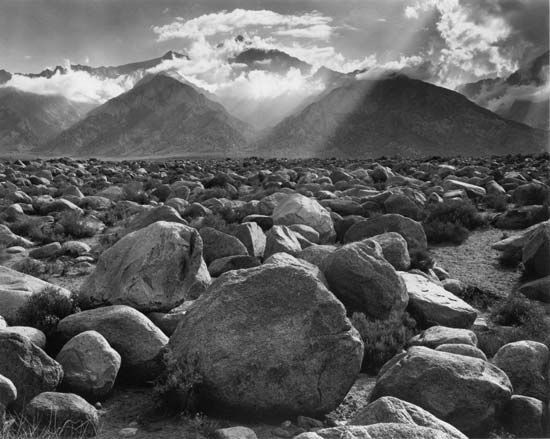Landscape- Thinking Artistically
- most important aspect= composition
- viewpoint --> positioning of camera
- explore all variations when shooting
- move camera around (ex. left, right, up, down)
- balance between unity and variety
- use line to draw viewer's attention
- pattern- repetition

Settings
- f/16, f/22, f/32
- f/64 is the smallest
- smaller f stop gives a greater depth of field
- lighting
- before sunrise or sunset
- angle of sun is low which emphasizes shapes and textures
- fluorescent =greener
- daylight= more blue
- quartz= yellow
- film
- 100 ISO film (35 mm)
- slower film= most detail
- bigger negative the more it will capture
- color emphasizes color and setting
- black and white emphasizes shapes, values and textures
- lenses
- wide angle lense
- close and distant objects in shots
- filters
- red filter- contrast
- yellow- brings out clouds
- polarizer= darkens blue sky
- brings out textures
-791736.jpg)
- use a tripod for support
- grand view for outdoor photos
- shadows- line, shape, value

Details
- sunny days can be bad
- light meters
- abstracted element
- composed of lines, values, shapes and textures
- more abstract
Interior
- everything in focus
- as close as 4 ft. or as far as 20 ft.
- use a tri pod (slower shutter speed)












-791736.jpg)
